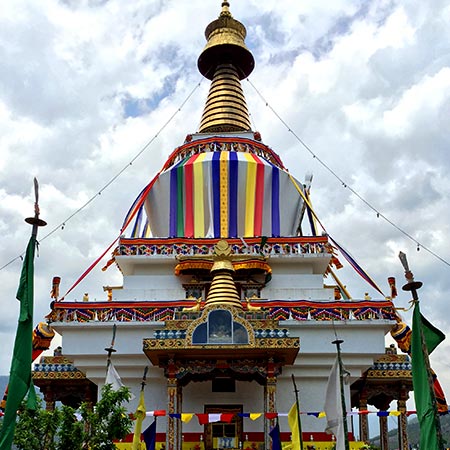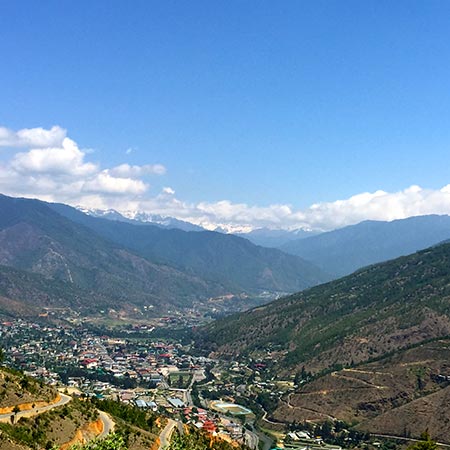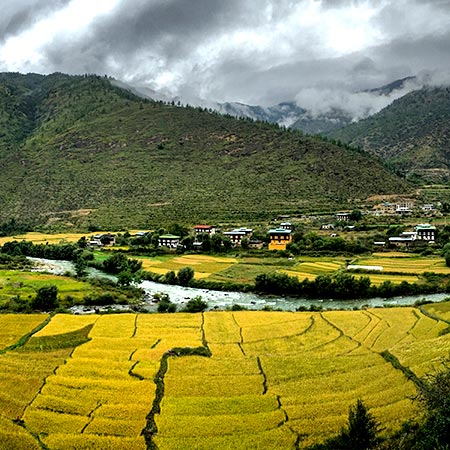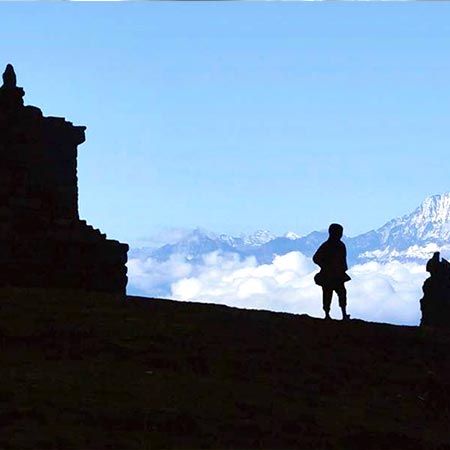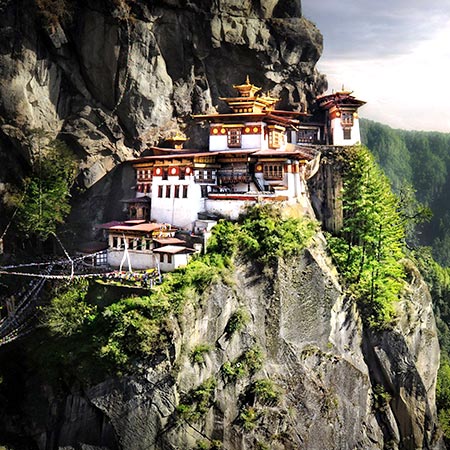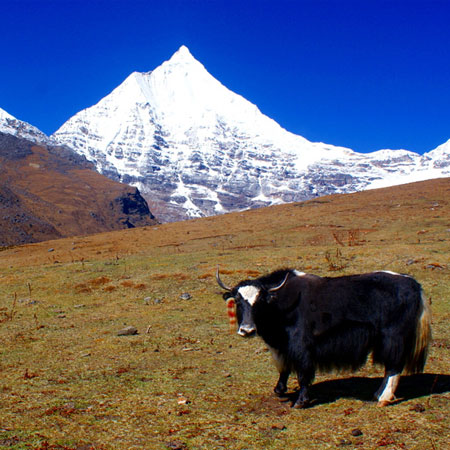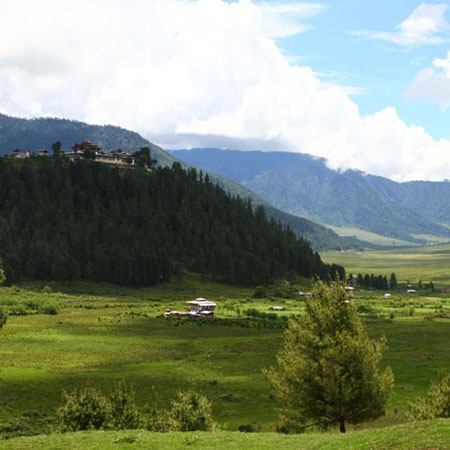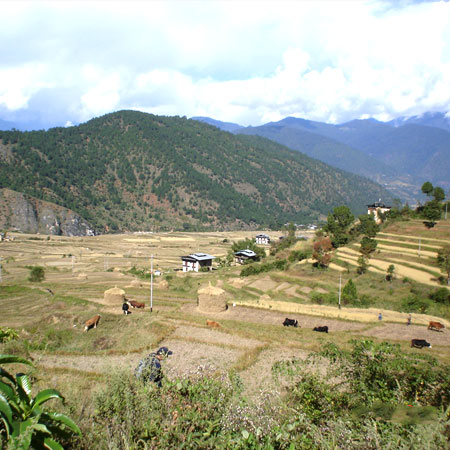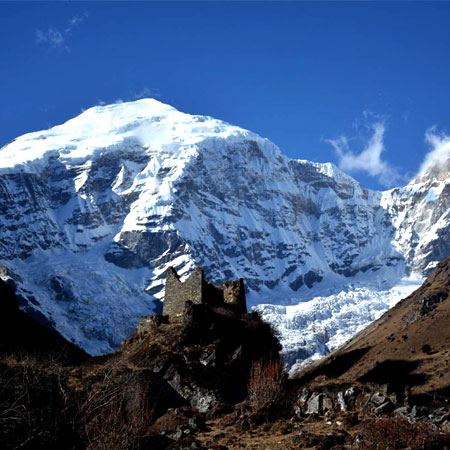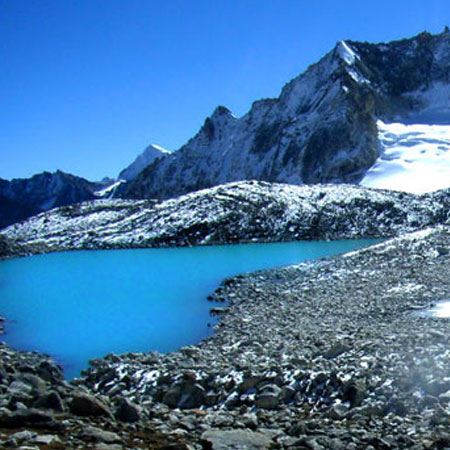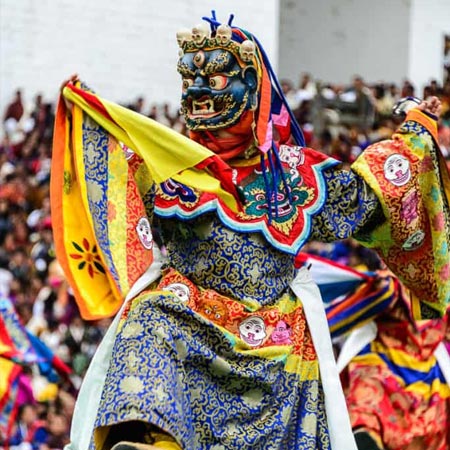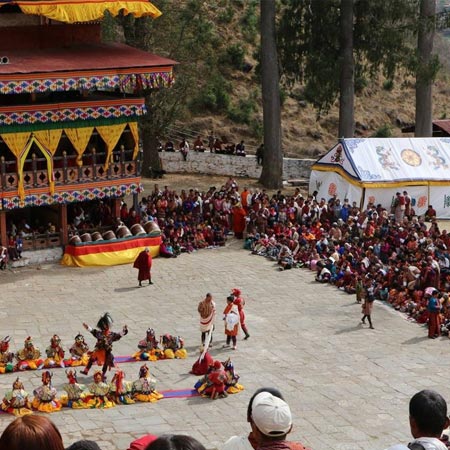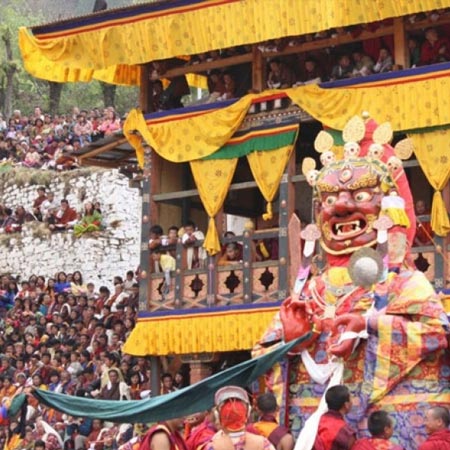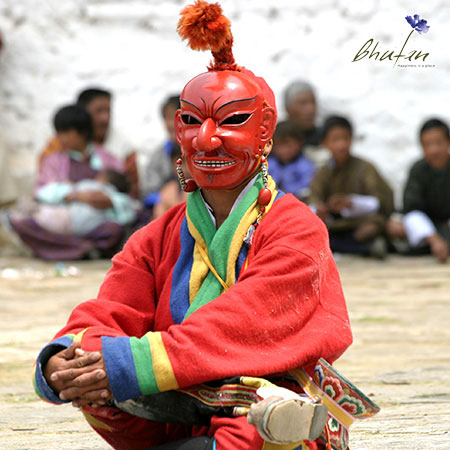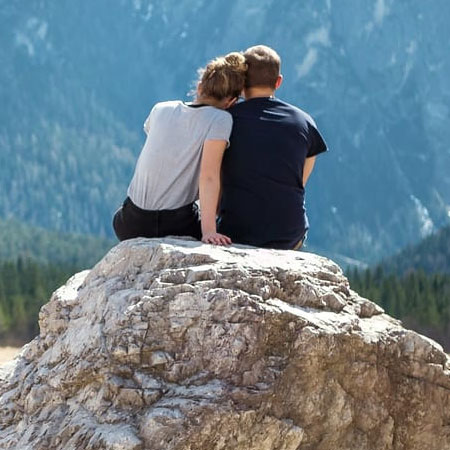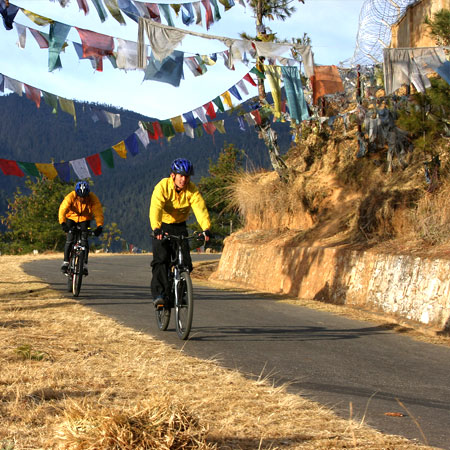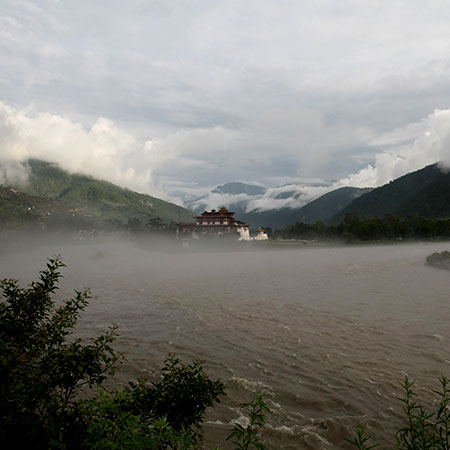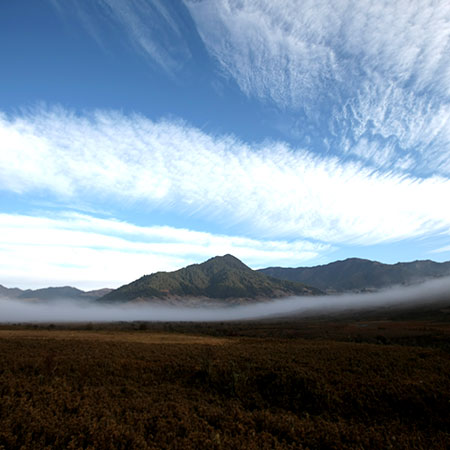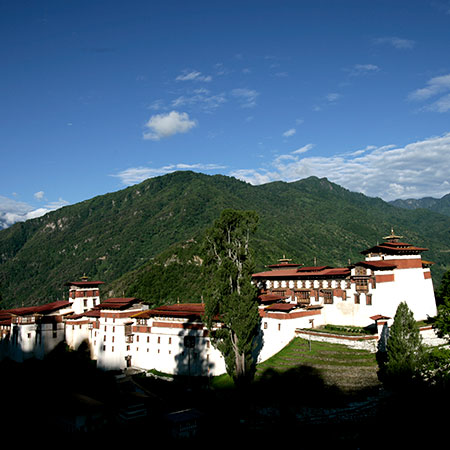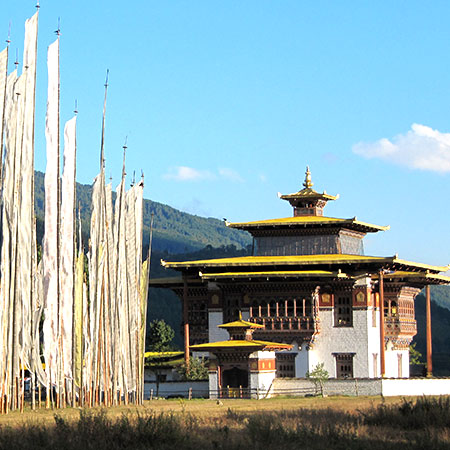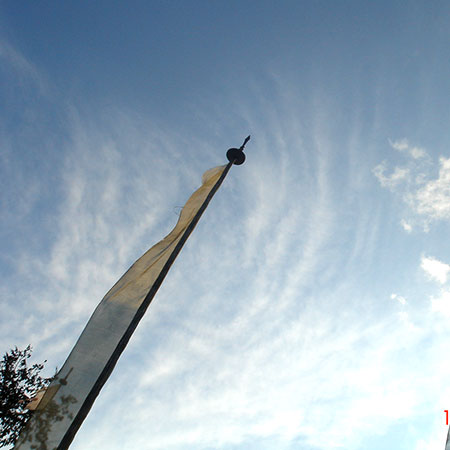Tshechu : Festivals of Bhutan
Tshechu is a religious festival meaning "tenth day" held annually in various temples.
About the Festival : Religious festivals are important events throughout the Tibetan Buddhist world – commemorating the deeds of Buddha, or those of the great masters of the past associated with one Buddhist tradition or another.
In Bhutan, in addition to the standard Buddhist festivals, there are yearly festivals celebrated with great fanfare in each district. The most renowned of these are the Tsechu (10th day) festivals, commemorating the deeds of Padmasambhava. Locally referred to as ‘Guru Rimpoche’ or, simply as ‘Guru,’ this eighth century master, introduced the Nyingma school of Buddhism into Tibet and Bhutan. Each 10th day of the lunar calendar is said to commemorate a special event in the life of Padmasambhava; and some of these are dramatized in the context of a religious festival. Most festival lasts from three to five days – one of which, usually, falls on the 10th day of the lunar calendar.
The regional Dzong and remote village communities hold their distinct annual Tsechu festival, providing the local populace with a wonderful occasion to dress up, gather together, and enjoy, in a convivial light-hearted atmosphere. It is also an occasion to renew their faith and receive blessings by watching the sacred dances, or receiving ‘empowerment’ from a lama or Buddhist monk.
The dances, each aspect of which has a symbolic meaning, are performed by trained monks and laymen wearing ornate costumes, and, in some cases, impressive masks. At Paro, Wangdu, Mongar and Tashigang, among other places, a large ‘thanka’ scroll known as a Tongdrol is exhihited for a few hours, at day break of the final day of the festival, enabling the people to obtain its blessing, since such scrolls ‘confer liberation by the mere sight of it’ (tongdrol in Bhutanese).
Of these festivals the Paro Tsechu, in the spring, and the Wangue and Thimpu Tsechus, in the fall, are the most impressive. These festivals are very popular with western tourists. The festivals in Bumthang and East Bhutan attract fewer tourists and those who want to get a more authentic flavor of Bhutan’s cultural and religious extravaganza will be well rewarded.
These festivals attract many western tourist and hotels and flights are sold out months in advance to organized tourist group. Anyone who wishes to visit Bhutan during these festivals should plan and make their tour arrangements well in advance.
Thimphu Tshechu
7th October - 09th October, 2019.

One of the biggest festivals in the country is the Thimphu Tshechu. This festival is held in the capital city for three days beginning on 10th day of the 8th month of lunar calendar. This Tshechu is witnessed by thousands of people many of which travel from neighboring Dzongkhags (districts) to attend the festivities. The actual Tshechu is preceded by days and nights of prayer and rituals to invoke the gods.
When it was initiated by the 4th Desi, Gyalse Tenzin Rabgay in 1867 the Tshechu consisted of only a few dances being performed strictly by monks. These were the Zhana chham and the Zhana Nga chham (Dances of the 21 Black Hats), Durdag (Dance of the Lords of the Cremation Ground), and the Tungam chham (Dance of the Terrifying Deities).
The Thimphu Tshechu underwent a change in the 1950s, when the third King Jigme Dorji Wangchuck, introduced numerous Boed chhams (mask dances performed by lay monks). These additions added colour and variation to the festival without compromising its spiritual significance. Mask dances like the Guru Tshengye (Eight Manifestations of Guru), Shaw Shachi (Dance of the Stags) are enjoyed because they are similar to stage-theater.
Equally important are the Atsaras, who are more than just mere clowns. The Atsaras are the dupthobs (acharyas), who provide protection. The dances and the jesting of the Atsaras are believed to entrance evil forces and prevent them from causing harm during Tshechus. Modern Atsaras also perform short skits to disseminate health and social awareness messages.
To farmers, the Tshechu is also seen as a break from farm life. It’s an occasion to celebrate, receive blessings and pray for health and happiness.
Paro Tshechu
17th March – 21st March, 2019. (Thongdral on last day)

The Paro Tshechu is held every spring and is one of the most colorful and significant events in Paro Dzongkhag (district). The Tsehchu is considered a major attraction and people travel from neighboring districts to participate in the festivity.
Early in the morning on the last day of the celebration the monks display a gigantic thangkha (embroidered painting) , the Guru Throngdel, inside the dzong.
Thongdrols are especially impressive examples of Buddhist art and never fail to amaze viewers. They are considered so sacred that simply seeing a Thongdrol is said to cleanse the viewer of sin.
Punakha Tshechu
15th February - 17th February, 2019.

Punakha is located in the western part of Bhutan is the winter home of the Je Khenpo, the Chief Abbot of Bhutan. Punakha has been of critical importance since the time of Zhabdrung Ngawang Namgyel in 17th century.
Zhabdrung Ngawang Namgyal is known as the unifier of Bhutan as a nation state and he was the one who gave Bhutan and its people the distinct cultural identity that identified Bhutan from the rest of the world.
During 17th century Bhutan was invaded several times by Tibetan forces seeking to seize a very precious relic, the Ranjung Kharsapani. Zhabdrung Ngawang Namgyal led the Bhutanese to victory over the Tibetans and to commemorate the triumph he introduced the Punakha Drubchen. Since then Punakha Drubchen (also known as Puna Drubchen) became the annual festival of Punakha Dzongkhag.
Dochula Tshechu
13th December, 2019.

The Dochula Druk Wangyel Festival was established in 2011 in commemoration of His Majesty the Fourth Druk Gyalpo and the Armed Forces’ victory over Indian insurgent forces residing in southern Bhutan in 2003.
Druk Wangyel Festival is an annual festival held on December 13th at the Druk Wangyal Lhakhang Festival Ground located at Dochula Pass around 22km from the capital city Thimphu. Dochula Pass is one of the most scenic locations in the entire kingdom, offering a stunning panoramic view of the Himalayan mountain range. Set amidst this breathtaking backdrop, the Dochula Druk Wangyal Tsehchu is an experience unlike any other and truely exemplifies Bhutanese cultural traditions.
The Druk Wangyal Lhakhang was built over a period of four years (2004-2008) under the vision and patronage of Her Majesty the Queen Mother Ashi Dorji Wangmo. The Lhakhang honors the courageous service of the Fourth King, who personally led the troops against the insurgents, as well as the regular Armed Forces of the country
Wangdue Tshechu
5th October - 7th October, 2019.

Wangduephodrang in central Bhutan is famous for Lozeys or Ornamental Speeches. Two notable lozeys are the tragic song of Gaylong Sumdar Tashi that of Pema Tshewang Tashi who served as an official at the Dzong. The Dzong served as the administrative centre and was built in 1639 by Zhabdrung Ngawang Namgyel at the confluence of Puna Tsang Chu.
The annual Wangduephodrang Tshechu was introduced by Zhabdrung Ngawang Namgyal after the completion of the dzong. The three-day annual Tshechu is attended by people from Punakha and Thimphu and provides the people with an occasion for merrymaking and revelry.
The Tshechu is known for the Raksha Mangcham or the Dance of the Ox. It concludes with the unfurling of the Guru Tshengye Thongdrol where people throng to receive blessings.
Bumthang : Jambay Lhakhang Drup
13th November - 16th November, 2019.

Jambay lhakhang is located in Bumthang and is situated on the way to the Kurjie Lhakhang. It’s a ten minutes drive to the temple from the Chamkhar town.
Jambay Lhakhang is one of the oldest temples in the kingdom. It was founded by, Songtsen Gampo, a Tibetan King in the 7th century AD. The king was destined to build 108 temples known as Thadhul- Yangdhul (temples on and across the border) in a day to subdue the demoness that was residing in the Himalayas. The temple is one of the two of the 108 built in Bhutan. A second is located in Paro, the Kichu lhakhang also built on the same day.
Legend has it that Guru Rimpoche visited the site several times and deemed it exceptionally sacred. Chakhar Gyab, the king of the Iron Castle of Bumthang renovated the temple in the 8th century AD.
Black-necked Crane Festival
11th November, 2019.

The Annual Black-necked Crane festival is celebrated in the courtyard of Gangtey Gonpa, in Phobjikha valley. The festival is an occasion for the locals to rejoice and celebrate the arrival of this endangered and majestic bird which becomes an inseparable part their daily lives during the winter months.
The annual black-necked crane festival is organized to generate awareness and understanding on the importance of conserving the endangered Black‐necked cranes; to strengthen the linkages between conservation, economic welfare and sustainable livelihoods of the community; provide an avenue for the local community to renew their commitment to conservation of the black-necked cranes, and to showcase their cultural heritage and skills.
The festival includes cultural programs such as folk songs and dances (some with black-necked crane themes) and mask dances performed by the local people, crane dances and environmental conservation-themed dramas and songs by the school children. The program usually starts by 9:30 am and lasts till late afternoon.
Matsutake Mushroom Festival
23rd & 24th August, 2019.

Learn to identify and harvest the fabled wild Matsutake mushrooms of Bhutan. Prized by gourmets in Japan, this fungi is native to the forests of Ura valley in central Bhutan. Hike the valley’s fragrant trails and give in to the thrill of discovering your own private patch of this most coveted of mushrooms. You can always visit the region’s exquisite temples and monasteries which rank amongst the most prized historical treasures of Bhutan.
This festival is scheduled during the 4th weekend of August and takes place in beautiful Ura valley. Ura is renowned for being one of the most picturesque valleys in the entire kingdom. Its inhabitants, the Uraps are a cheerful, hospitable people. Ura provides one of the most authentic experiences of traditional rural Bhutanese life available. At the festival, visitors will be learn to identify these fabled mushrooms as they embark on mushroom picking excursions around the pristine forests and hills. They’ll be able to sample delicious Matsutake recipes, engage in songs and dances together with the locals, hike through the stunning Himalayan landscape and even relax in traditional open-air mineral baths.

